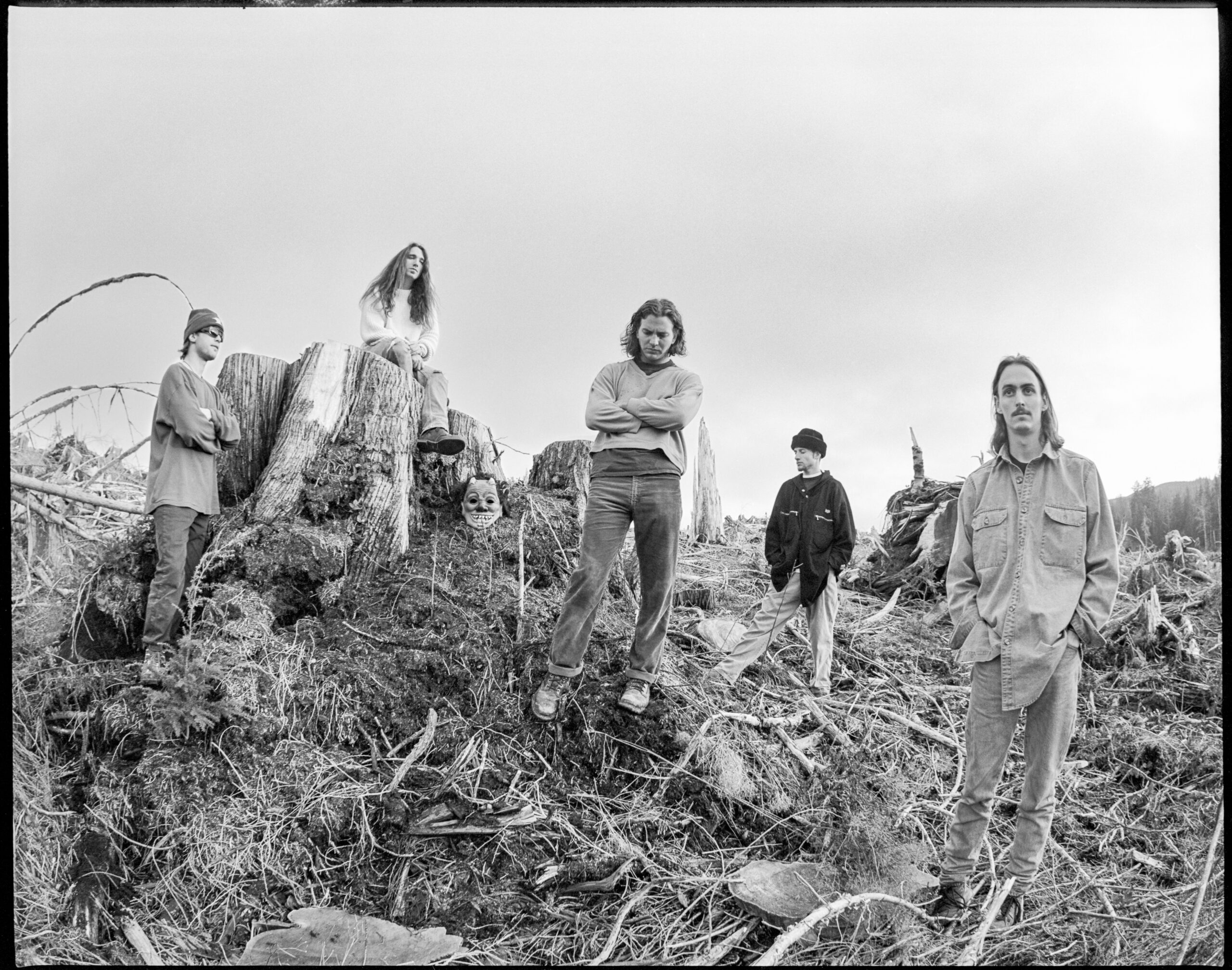I. THE SOUND OF A COLLAPSING CERTAINTY
In the early 1990s, American youth stood on the cusp of a cultural fracture. The exuberance of the 1980s had curdled into apathy, addiction, and anxiety. The Cold War was over, but peace brought no clear moral center, only the creeping realization that capitalism, suburbia, and the nuclear family were not the universal solutions they'd been sold to be. Into this vacuum came a rumble from the Pacific Northwest: the distorted catharsis of Grunge. And among its most complicated, conflicted, and commanding voices was Pearl Jam.
While “Ten” (1991) introduced the world to a band steeped in anguish, “Vs.” (1993) revealed one struggling against commodification, uncomfortable with adulation, and determined to interrogate the very systems that uplifted them. In contrast to the ironic detachment of much alternative rock, Pearl Jam trafficked in naked sincerity. This essay explores how Ten and Vs. not only defined the early trajectory of Pearl Jam but also reflected the broader generational unease of their time.
II. THE SEATTLE SCENE: FROM OBSCURITY TO OVERLOAD
To understand Pearl Jam's early work, one must first grasp the unique alchemy of the Seattle music scene. Isolated from industry centres like Los Angeles and New York, Seattle's musicians nurtured a raw, hybrid sound. Elements of punk, metal, and classic rock coalesced into what came to be known—somewhat reductively—as Grunge.
Bands like Soundgarden, Mudhoney, and Green River (from which Pearl Jam partly emerged) laid the groundwork. Then came Nirvana, whose “Nevermind” (1991) exploded into the mainstream, forcing the major labels to scramble northward in search of the next big thing. But while Nirvana exuded punk nihilism, Pearl Jam offered a different posture: bruised, bombastic, and defiantly earnest.
Formed from the ashes of Mother Love Bone (following frontman Andrew Wood's heroin overdose), Pearl Jam emerged as a phoenix of grief and ambition. Guitarists Stone Gossard and Mike McCready, bassist Jeff Ament, and drummer Dave Krusen recruited a San Diego surfer and gas-station attendant named Eddie Vedder, who responded to their demo tape with lyrics full of raw poetry. From that combustible fusion came Ten.
III. "TEN" (1991): SINGING FROM THE SCARS
Released on August 27, 1991, just a month before “Nevermind”, “Ten” did not become an overnight success. But over the following year, it grew into a slow-burning juggernaut. The record was a storm of reverb-heavy guitars, arena-rock instincts, and Vedder’s unmistakable voice: a baritone rasp filled with ache, fury, and pleading.
Lyrically, “Ten” dealt with themes rarely explored in mainstream rock at the time: child abuse ("Jeremy"), suicide ("Alive"), mental illness ("Why Go"), and alienation ("Black"). Vedder’s lyrics, often drawn from his own life, were unflinchingly confessional. But what made “Ten” resonate wasn’t just the darkness, it was the humanity beneath it.
"Alive," for example, is often misread as a triumphant anthem. In truth, it’s the first part of a narrative trilogy where a son discovers that the man who raised him is not his biological father, and his mother may be spiralling into something incestuous. Yet Vedder turned this trauma into myth, transforming shame into a chorus shouted by stadiums.
Musically, “Ten” is more polished than many Grunge records. Producer Rick Parashar's slick, echo-laden production leaned toward the grandiosity of classic rock. Critics sometimes saw this as inauthentic, but fans heard catharsis. Where Nirvana wanted to destroy the stadium, Pearl Jam sought to fill it with screams of truth.
IV. A GENERATION IN SEARCH OF AUTHENTICITY
The success of “Ten” made Pearl Jam icons overnight. But unlike their peers, the band reacted to fame with ambivalence bordering on hostility. Vedder, especially, grew uncomfortable with being seen as a voice of a generation. To him, the music was meant to connect, not to canonize.
This resistance must be seen in the context of a generation deeply sceptical of authority, consumerism, and media manipulation. Grunge, at its core, was a backlash against the glamor and artificiality of '80s pop culture. But what happens when the backlash becomes commodified?
Pearl Jam’s answer was to fight back, even at the cost of popularity.
V. “VS.” (1993): THE WAR WITHIN
Released on October 19, 1993, “Vs.” was a deliberate reaction against both their fame and the sheen of "Ten". The album is rawer, more aggressive, and more diverse in tone. Gone is the reverb-heavy polish. In its place is a serrated edge, courtesy of producer Brendan O’Brien and drummer Dave Abbruzzese's muscular energy.
Thematically, “Vs.” expands Pearl Jam’s purview. Songs like "W.M.A." confront police brutality and systemic racism. "Glorified G" mocks American gun culture. "Daughter" explores learning disabilities and parental abuse. Even seemingly personal tracks like "Rearviewmirror" are laced with political subtext, about escape, autonomy, and resistance.
Musically, the album veers in multiple directions. “Go” opens the record with primal urgency. “Dissident” and “Animal” are tightly wound rockers. “Indifference,” the closer, is almost liturgical in its resignation. The tension between message and form is ever-present.
“Vs.” sold a record-breaking 950,000 copies in its first five days, yet the band refused to release any music videos or participate in traditional promotion. They also began their infamous battle with Ticketmaster, challenging the monopolistic grip the company held over concert pricing and access. In doing so, Pearl Jam became not just musicians but cultural dissidents.
VI. “THIS IS NOT FOR YOU”: THE REJECTION OF COMMODIFICATION
Pearl Jam's early career is marked by an almost pathological discomfort with success. In the era of MTV and Rolling Stone covers, they opted for silence, privacy, and activism. This wasn't merely posturing, it was a refusal to let their art become product.
“This is not for you,” Vedder sang in 1994, a year after “Vs.”, on Vitalogy. The line encapsulates the band’s ethos: music as expression, not commodity. Unlike Nirvana, who imploded under the contradictions of fame, Pearl Jam endured by confronting them directly.
This attitude had consequences. Critics accused them of being self-serious, sanctimonious, even boring. But their audience stayed—and grew. They weren’t idols; they were messengers. They didn’t offer solutions. They offered recognition.
VII. LEGACY: THE LONG SHADOW OF SINCERITY
In the decades since “Ten” and “Vs.”, Pearl Jam has evolved musically, politically, and philosophically. But those first two records remain essential. They are documents of transition, not just for the band, but for a generation.
Where “Ten” is a howl of pain turned into communion, “Vs.” is a declaration of independence from industry, media, and myth. Together, they capture the duality of the 1990s: the desire to speak truth and the dread of being heard too loudly.
In an age of irony, Pearl Jam dared to be sincere. And in doing so, they gave voice to millions caught between the wreckage of the American dream and the urge to believe in something real.
VIII. ECHOES THAT REFUSE TO FADE
Three decades later, the songs still resonate. “Alive,” “Black,” “Elderly Woman,” “Daughter,” “Rearviewmirror”, they carry the weight of memory and the urgency of now. The world has changed, but the fractures Pearl Jam sang about remain.
Perhaps that’s the band’s true
legacy: not in revolution, but in recognition. Not in spectacle, but in
solidarity. Not in being cool, but in being honest. And in the end, that may be
the most radical act of all.



Comentários
Enviar um comentário